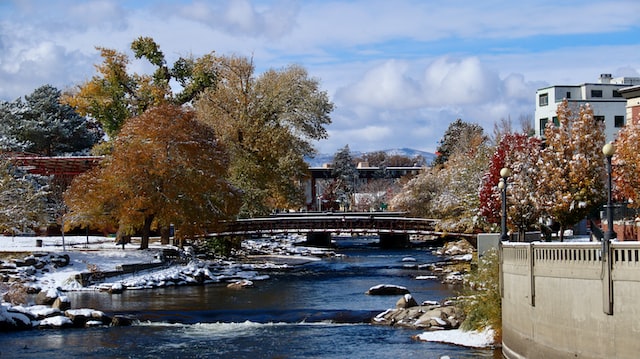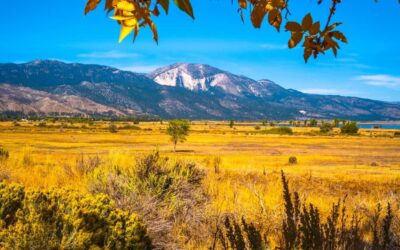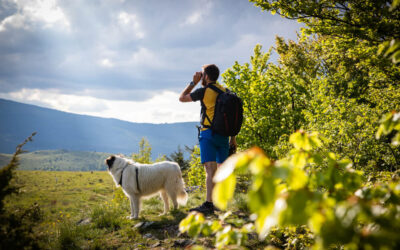Where does Reno Nevada get its water from?
The city gets its water from the Truckee River, which flows into Lake Tahoe. The river originates in the Carson Valley region of Northern California and runs through the state before emptying into Pyramid Lake. Lake Tahoe the largest lake in California is located in the Sierra Nevada mountain range. This area has some of the highest rainfall in North America. The average annual precipitation in Reno is over 50 inches.
Is Reno’s tap water safe to drink?
The Truckee-Mead Valley Water Authority serves almost 400,000 people in Reno, Sparks, and other Washoe County communities and has an excellent drinking water record. The water sourced from the Sierra Nevada mountains is some of the cleanest and purest in the country and undergoes strenuous testing to ensure that it meets all state and federal drinking water standards.
How Clean Is Reno’s Tap Water?
Reno, known for its casinos and nightlife, ranks 25th on BestLifeOnline.com’s list of the 50 places in the United States with the worst drinking water. The website based its rankings on data from an Environment America Research & Policy Center study examining drinking water quality in all 50 states.
According to the report, this data appears to have been acquired by the Environmental Working Group between 2015 and 2017. The investigation detected 11 pollutants that exceeded health standards. These pollutants included: arsenic, chromium-6, fluoride, and lead.
Is the water in Reno chlorinated?
The water in downtown Reno (where we work) is frequently contaminated, with a residual chlorine content of 3 parts per million (ppm). This amount exceeds what is deemed safe for public swimming pools. The water often smells bad and can cause skin irritation. We avoid drinking it or using it to cook.
Where Does Your Home’s Tap Water Come From?
Different sources of water are used to supply communities with drinking water. These can include rivers, lakes, and groundwater. After the water has been treated, it is typically pushed from intake sites to a treatment plant. The water is stored in a tank from the treatment plant and then finally pushed to homes via various pipe networks.
Water treatment is a process that involves adding chlorine and flocculation to water to remove impurities. This process is known as coagulation and flocculation, resulting in cleaner, healthier water.
Is there a water shortage in Reno, Nevada?
This is due to the extremely dry conditions gripping western Nevada for the past several months. The lack of precipitation has taken a toll on Reno’s water supply, prompting officials to impose strict water restrictions. If the drought continues, it could lead to even more serious problems.
Despite the storm that recently swept through the region, we have not been able to achieve a more temperate climate.
Is Lake Tahoe a source of drinking water?
Lake Tahoe has become a major tourist destination over the years. Is it safe to drink its water?
The lake was formed by volcanic eruptions millions of years ago. Its waters contain high levels of calcium carbonate (CaCO3), magnesium, sodium, potassium, chloride, bicarbonate, sulfates and silica. These minerals give the water its characteristic blue color.
Tahoe City Water Department says that they don’t recommend drinking the water due to health risks. They also say that the city does not test for Cryptosporidium or Giardia, two parasites that cause gastrointestinal illness.
Is Nevada’s tap water safe to drink?
Nevada has some of the cleanest drinking water in the country, thanks to its clean energy sources. But does that mean the state is immune from contamination?
Nevada is known for its beautiful desert landscape and warm weather. The state also boasts some of the cleanest water in the nation. In fact, according to the Environmental Protection Agency (EPA), Nevada ranks third in terms of overall water quality.
However, the EPA reports that Nevada’s groundwater contains high levels of arsenic and nitrate. These contaminants come from natural sources such as volcanic eruptions or human activities. Some common human activities that lead to water contamination are improper disposal of hazardous materials, agricultural runoff, and sewage overflows.
What Is the Quality of Nevada’s Water?
The Safe Drinking Water Act is a federal law that sets standards for the quality of drinking water in the United States. The state of Nevada has its own set of standards for drinking water quality, which are more stringent than the federal requirements. All municipal water supplies in Southern Nevada meet or exceed these standards.
Where Does Reno’s Drinking Water Come From?
The Truckee River is a river in the western United States that flows from Lake Tahoe to Pyramid Lake. The 116-mile-long (187 km) river drains an area of the Sierra Nevada and Great Basin in northeastern California and northwestern Nevada. It supplies drinking water for the cities of Reno and Sparks, Nevada.
Conclusion
Although the water from the tap in Reno is safe to drink, some people prefer to either boil it first or buy purified drinking water. This is usually a personal preference but can also be due to someone’s specific health needs. If you have any concerns about the safety of the water, it is always best to consult with your local health department.





